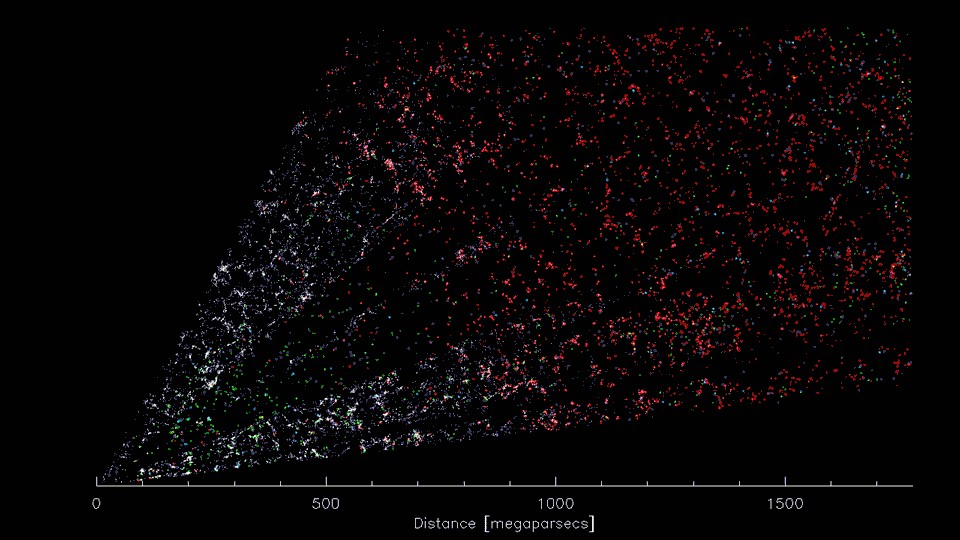Data from the first survey campaign of the Dark Energy Spectroscopic Instrument (DESI) produced the largest and most detailed 3D map ever made of the universe. The image reveals a gigantic cosmic web of galaxies spanning billions of light-years. And this is just the beginning of a project.
We have known for a long time that the Universe is expanding, but also that this expansion is accelerating, steadily increasing the rate at which galaxies "leak" over time. We owe this process to a repulsive "force" opposing gravity called "dark energy". This force, which constitutes about 68% of the total energy density of the Universe , will ultimately determine its fate:will it stretch forever to the point of tearing itself apart? On the contrary, will the Universe collapse in on itself?
In an effort to better understand this "dark energy", the U.S. Department of Energy's Office of Science has funded the development of a new instrument called DESI, whose objective is to track the movements of millions of galaxies. Thanks to these data, researchers will be able to measure the acceleration of the expansion of the Universe with unprecedented precision.
To operate, DESI takes its measures by means of a very unique configuration. The light passes through six large lenses before being captured by an array of fiber optic cables controlled by 5,000 robotic positioners that can move the cables into place with an accuracy of ten microns. From there, the light is sent to ten spectrographs responsible for splitting it into its constituent colors for analysis.
This level of precision therefore allows researchers to collect detailed images of the color spectrum of millions of galaxies . By doing so, they can determine how much light becomes redshifted (the more redshifted a galaxy's spectrum is, the further away it is).
In place for two years, DESI produced its first map of the universe a few days ago. The image contains 7.5 million galaxies covering a distance of about five billion light-years towards the constellation Virgo. In this painting, huge clusters and filaments, the largest structures in the universe, form a veritable cosmic web.

And that's just the beginning. At the end of its main mission in 2026 , the instrument will indeed have listed more than 35 million galaxies extending up to eleven billion light-years .
Note that the DESI instrument is not the only one focused on dark energy. The European Space Agency's (ESA) Euclid mission also promises to shed light on this cosmic mystery. To do this, the mission will rely on a space telescope with two instruments:an imager observing in visible light (VIS) and a spectro-imager specialized in the near infrared (NISP). Its launch is planned for 2022 .
Thanks to these two approaches, we could soon answer two of the most fundamental questions of our existence:where do we come from? And where are we going?